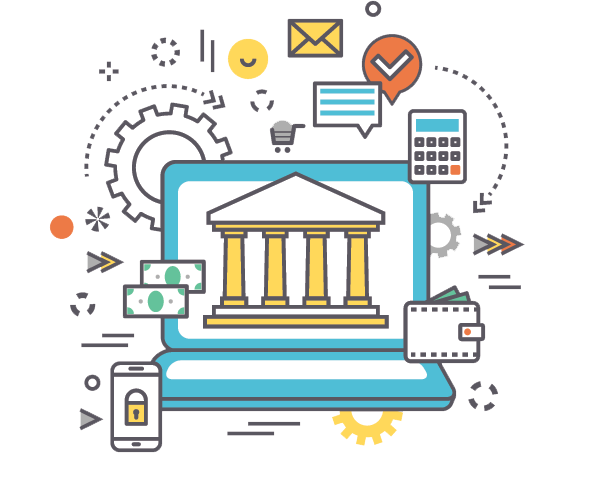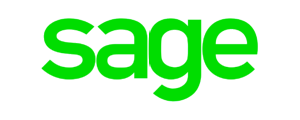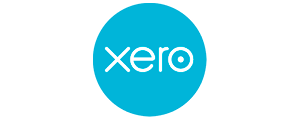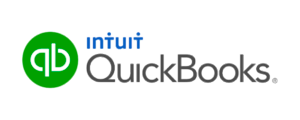British banking is on the threshold of a revolution. A revolution that could transform the way your business manages money.
It’s all thanks to the second Payment Services Directive (PSD2). It may sound like a droid in the next Star Wars film but is in fact new European legislation that will help many SMEs reach for the stars.
Known in the UK as Open Banking, it’s an invisible but important change to how data can be shared: one small step that could fundamentally disrupt how banks operate.
A survey by consumer champions Which found that in September 2017 92% of the public had never heard of the Open Banking regulation. As it’s being rolled out gradually, awareness will be a slow burner.
So, if you’re still in the dark, this article will enlighten you with answers to all the important questions: what is Open Banking? How will it affect B2B payments? What benefits will it bring to my business?
Open Banking Explained

Open Banking is a set of reforms led by the PSD2 and backed by the Competition and Markets Authority, the UK competition watchdog that encourages markets to work at their best for business, consumers and the economy.
The legislation means that all UK banks now have to allow consumers to easily and securely share their financial data with authorised providers. Introduced on January 13th 2018, it ensures this data, which encompasses spending history and regular payments, is released in a secure, standardised form.
Currently, it only applies to bank accounts but as the roll-out continues credit card and savings account will be incorporated into the scheme.
Once an account holder has given permission, third parties including money management apps and other banks, can access this information-rich data in a way previously not possible.
It opens up possibilities for existing and start-up tech companies to develop, innovate and grow. Tailor-made products based on accurate data will encourage innovation within the banking industry and beyond.
Dedicated Application Programming Interfaces (APIs) will also shake up the way both consumers and businesses pay and get paid: authorised providers, separate from the banks, will be able to take payments from customers and B2B payments will be simplified.
This will lead to slicker, speedier payment methods as consumers will be able to bypass their banks and credit cards completely, if they choose.
Alongside this creative charge, Open Banking will also encourage greater competition between banks as they all battle to provide consumers with the best tech to manage their money and the best customer service to accompany it.
Who is Signed Up to Open Banking?
Currently, only the UK’s largest banks and building societies are legally obliged to make your data available to third parties.
These consist of:
- Allied Irish Bank
- Bank of Scotland
- Barclays
- Danske
- Halifax
- HSBC
- Lloyds Bank
- Nationwide
- NatWest
- Santander
- The Royal Bank of Scotland
- Ulster Bank
Others can choose to join, with First Direct, Bank of Ireland and M&S Bank coming on board soon. Keen not to get left behind, they’ll be introducing their own APIs to improve the customer experience and increase their market share.
Who Can Request Data?

Within the Open Banking scheme, every third-party provider must be regulated by the Financial Conduct Authority (FCA). If they’re not, there’s no automatic fraud protection available via your bank.
Once authorised, they appear on the Open Banking Directory which gives the reassurance that they meet the Open Banking Standards.
These are a set of API specifications, designed to offer “trust, transparency and consumer protection”, that underpin how each of them can connect safely and securely to banks and building societies.
Before they can request access to your data, they have to receive separate authorisation for offering one or both of the following:
- Account information services – for example budgeting and price comparison apps that need account information from different banks to be in one place.
- Payment initiation services – for example apps which allow consumer and B2B payments to be made directly from a bank account, not via a third party such as Visa.
Examples of providers who appear in the Open Banking Directory include credit score company ClearScore, smart money platform Yolt and business financing tool Funding Options.
However, as the roll-out means that some providers don’t need to be authorised until the end of 2019, you can continue to use those which don’t yet appear on the list.
Accounting platform Xero, for example, has been securely accessing bank data for ten years, long before PSD2 was even considered. These feeds are integrated with their software to make accounting straightforward and streamlined, a system that’s trusted by over one million users in 180 countries.
The success of Xero showcases how sharing financial data can revolutionise the way small businesses manage their accounts. For example, you can choose from hundreds of apps, ranging from PayPal to Shopify and iwoca, to add to your Xero dashboard.
You can even integrate your Direct Debit bureau’s processing systems with Xero for a real-time overview of all your payments. Secure and efficient, the principles of Open Banking are already proving their worth.
The advice, of course, is to make your own judgment on any app’s security arrangements and if you have any doubts, wait until they’re officially authorised.
Open Banking Explained for Consumers
Before we explore how the Open Banking regulation will bring benefits to your business, here we’ll focus on what it means for your clients.
First and foremost, PSD2 puts the consumer in control of their data. It belongs to them. If they prefer, nothing in their financial arrangements will change. They can continue using the products and services they’re familiar with, keeping data access unaltered.
This is because providers need express permission from the account holder to gather data from banks and building societies. Without it, Open Banking is useless to them.
A recent survey by www.moneywise.co.uk revealed that 73% of their users wouldn’t sign up to Open Banking. Of these, 63% said they didn’t want to share their data with third parties and 10% said they’re satisfied with the existing account switching service.
However, if consumers do decide to opt out of these new opportunities, they’ll be missing out on a world of personalisation possibilities and choice.
Financial institutions will be trailblazing to create new platforms, products and services to attract and retain clients who’ll be able to:
- View all their accounts in one place via specialist apps
- Compare current account and savings offerings from different providers
- Make direct payments via a trusted API without using a credit or debit card
- Be informed about the best borrowing rates for loans and terms for credit cards
- Have a comprehensive overview of their debt
- Detect fraud at an early stage
- Reduce admin time by accessing different accounts via different platforms
- Enjoy high-quality customer service as banks compete for their loyalty
In the not too distant future, they’ll be able to carry out all their financial management and monitoring via a single mobile app.
And being able to compare bank accounts with the swipe of a finger will stimulate further competition between providers. The number of current account holders switching banks fell in 2017 to 931,956, a figure which should rise once Open Banking is widely used.
Open Banking Explained for Business
 Open Banking is especially exciting for SMEs. It opens up new routes to digitalisation that will boost efficiency and productivity and encourage more agile ways of working.
Open Banking is especially exciting for SMEs. It opens up new routes to digitalisation that will boost efficiency and productivity and encourage more agile ways of working.
For tech start-ups in particular, Open Banking removes a major hurdle for innovation.
With the data floodgates open, smaller companies will now be able to compete with the big players who’ve previously been powerful enough to negotiate complex data deals with banks.
With game-changing information in their hands, they’ll be equipped to develop smarter apps that address the needs of specific challenges in specific industries. Advances that will mean even better services for businesses.
Beyond these developers, Open Banking has a wealth of benefits to help your business get ahead. Within its secure arena, you’ll soon be spoilt for choice when it comes to embracing leading-edge tech.
These enhanced next-generation digital services will deliver:
- Time-saving, admin-reducing, security-boosting, productivity-powering software tools
- Access to a wider choice of apps that fit your exact needs and meet your challenges
- Simplified cashflow monitoring, reporting and projecting
- Account aggregation for a more detailed overview of all your accounts in one place
- Transparent information about available deals for more informed choice and better fit
- Improved access to appropriate funding and lending due to more accurate credit risk assessments and comparison tools
- The opportunity to get better credit terms based on your actual financial history
- An alternative way to quickly make and receive payments, bypassing the costs involved with debit and credit cards and increasing the efficiency of your accounts team
- Improved security thanks to tech advances in accessing data, along with the accountability provided by FCA recognition
- Increased customer satisfaction thanks to your convenient and trustworthy financial partners
Open Banking will allow you not only to make the most of your current financial position but also to radically improve it.
Open Banking in Action
Early adopters of Open Banking are already putting their innovations into practice.
HSBC is working alongside fintech company Bud to trial an app which gives its online First Direct customers access to all their accounts, regardless of which bank they’re with. It also includes money management tips and product suggestions based on their data.
The trial of Connected Money gives 2000 customers and 4000 non-customers the convenience of viewing all their accounts in one place. They can also see how much they have left to spend once regular payments are deducted, set up financial goals such as saving for a holiday, analyse their spending by retailer and by account, and create separate lists of transactions by type, e.g. household bills and groceries.
This level of insight offers a glimpse of what banks will need to provide in order to attract and retain customers. They’ll have to continually enhance their product offer to stay ahead of the competition.
HSBC’s example of Open Banking in practice highlights how PSD2, by facilitating and regulating data sharing, puts the consumer in control while opening up meteoric opportunities for business.
How is the Data Accessed?
 Open Banking has been designed “with security at its heart” to address any concerns about data sharing.
Open Banking has been designed “with security at its heart” to address any concerns about data sharing.
Apps already on the market have traditionally used a technique called “screen-scraping”. This is a relatively primitive method which involves giving providers the equivalent of “read-only” access to your online banking account.
What this equates to is giving them your log-in details and allowing it to pretend to be you, albeit with limited control. They can analyse your data and make payments on your behalf with your authority.
But from autumn 2019, screen-scraping will be banned across Europe as it’s not as safe as the alternative: APIs.
Within the Open Banking regulation, APIs act as digital doorways to data, allowing it to be shared between banks and providers. The standards set by the scheme mean every bank and authorised third-party provider has to follow an API blueprint to ensure high levels of consistency and security.
These APIs don’t require passwords and log-in details to be shared, they simply connect with the banks’ digital systems and do their job. Strict customer authentication procedures are also an integral part of Open Banking, as is consumer control over consent.
API technology is already widely used in the financial industry. For example, FastPay’s Direct Debit API allows clients to fully integrate their billing system with the bureau’s bespoke software. This secure direct access streamlines accounting set-ups to boost efficiency and productivity.
Open Banking will increase the breadth and depth of these digital wizards, facilitating data-sharing and supercharging the financial health of SMEs.
In the digital age, data is king. Open Banking recognises its undisputed reign and has set the wheels in motion for greater collaboration between banks, businesses and consumers.












